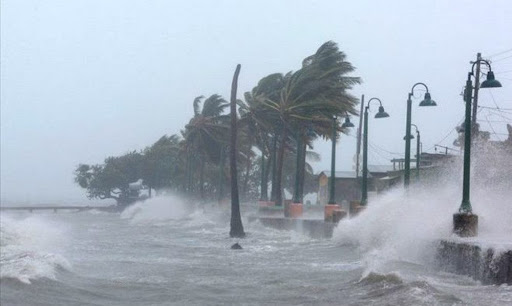Scheme to improve forest quality to preserve forest ecosystems and prevent and combat natural disasters until 2030 in Vietnam
What are the regulations on the Scheme to improve forest quality to preserve forest ecosystems and prevent and combat natural disasters until 2030 in Vietnam? - Hong Quan (Ca Mau)

Scheme to improve forest quality to preserve forest ecosystems and prevent and combat natural disasters until 2030 in Vietnam (Internet image)
On February 7, 2024, the Prime Minister issued Decision 171/QD-TTg approving the Scheme to improve forest quality to preserve forest ecosystems and prevent and combat natural disasters until 2030.
Scheme to improve forest quality to preserve forest ecosystems and prevent and combat natural disasters until 2030 in Vietnam
Specifically, the Prime Minister approved the Scheme to improve forest quality to preserve forest ecosystems and prevent and combat natural disasters by 2030, with 03 main tasks as follows:
* Review the current status, determine specifically the area, location, and boundaries of forest objects that need to improve forest quality
Specifically review the current status, determine the specific area, location, and boundaries of each type of forest to enhance the quality, and ensure considerations in accordance with the characteristics and current status of the forest reserves, the composition and structure of tree species, and the structure of each type of specialized forest, protective forest, and production forest as natural forests under forest management, as follows:
- Special-use forests: natural forests with poor reserves, forests without reserves in areas representing typical natural forest ecosystems with small areas and reduced biodiversity.
- Protection forests: natural forests with poor reserves, forests without reserves, low quality planted forests in the watershed protection forest area; basins of rivers, large lakes, hydroelectric dams, irrigation; where there is a steep slope, the risk of landslides is high.
- Production forests are natural forests: natural forests with poor reserves, forests with no reserves; priority is given to areas with steep terrain, high risk of landslides, river basins, lakes, hydroelectric and irrigation dams.
* Develop Schemes, plans, and plans to improve forest quality
Based on the review and specific determination of the current status, objects, area, and type of forest according to the forest manager, develop Schemes, plans, and plans to improve forest quality; which specifically identify silvicultural technical measures such as zoning off to promote natural regeneration; zoning to promote natural regeneration with additional planting; enriching forests, and nurturing forests for each forest object.
Select plant species to improve forest quality in accordance with the functions of each type of forest (special-use forests, protection forests, and production forests) for each ecological region to preserve forest ecosystems, conserve biodiversity, and increase the protection capacity of forests. Prioritize the selection of native tree species; multi-purpose plants; species that are resistant to different site conditions; Precious and rare species have high economic and conservation value.
* Develop point models to improve forest quality for each region
Building point models to improve forest quality with many native tree species with multi-layered, multi-species structures, improving the conservation ability of forest ecosystems and the forest's protective function in difficult site conditions, sloping land, and dry areas for each type of forest (special-use forests, protection forests, and natural production forests) and each ecological region to deploy and implement; based on monitoring and evaluating results, the model will be summarized, documented, and replicated in other regions and nationwide.
More details can be found in Decision 171/QD-TTg, taking effect on February 7, 2024.
Ho Quoc Tuan
- Key word:
- natural disasters
- in Vietnam
- forest ecosystems
- Number of deputy directors of departments in Vietnam in accordance with Decree 45/2025/ND-CP
- Cases ineligible for pardon in Vietnam in 2025
- Decree 50/2025 amending Decree 151/2017 on the management of public assets in Vietnam
- Circular 07/2025 amending Circular 02/2022 on the Law on Environmental Protection in Vietnam
- Adjustment to the organizational structure of the Ministry of Health of Vietnam: Certain agencies are no longer listed in the organizational structure
- Vietnam aims to welcome 22-23 million international tourists in Vietnam in 2025
-

- Types of natural disasters requiring forecast ...
- 11:00, 12/09/2024
-

- Emergency response and search and rescue organizations ...
- 10:29, 11/09/2024
-

- Handling of the acceptance results of ministerial ...
- 09:30, 11/09/2024
-

- Guidance on unexploded ordnance investigation ...
- 18:30, 09/09/2024
-

- Sources of the National database on construction ...
- 16:37, 09/09/2024
-

- Notable new policies of Vietnam effective as of ...
- 16:26, 11/04/2025
-
.Medium.png)
- Notable documents of Vietnam in the previous week ...
- 16:21, 11/04/2025
-
.Medium.png)
- Notable documents of Vietnam in the previous week ...
- 16:11, 02/04/2025
-
.Medium.png)
- Notable new policies of Vietnam to be effective ...
- 16:04, 02/04/2025
-
.Medium.png)
- Notable new policies of Vietnam effective from ...
- 14:51, 21/03/2025
 Article table of contents
Article table of contents
